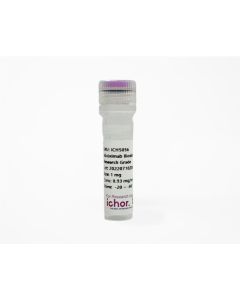Back to Top
Mouse Anti-Mouse PD-1 (29F.1A12) Recombinant Antibody (LALAPG)
Add recommended extras
Mouse Anti-Mouse PD-1 (29F.1A12) Recombinant Antibody (LALAPG)
| Concentration | 1.0 - 5.0 mg/ml |
|---|---|
| Isotype | Mouse IgG2a |
| Host | Mouse |
| Use | Products are for research use only. Not for use in diagnostic or therapeutic procedures. |
| Application Notes | Western Blotting: To detect Mouse PD-1 this antibody can be used at a concentration of 30 µg/ml. Blocking: The 29F.1A12 antibody has been shown to block the binding of PD-1 to its ligands in vivo. For immune checkpoint antibodies 200 ug per mouse per in |
| Applications | Flow Cytometry, Western Blot, Blocking, IHC (Frozen) |
| Storage | Anti-PD-1 In Vivo Antibody - Low Endotoxin (29F.1A12) is stable when stored at 2-8°C for at least four (4) weeks. For long-term storage aseptically aliquot in working volumes without diluting and store at ï؟½80°C. Avoid Repeated Freeze Thaw Cycles. |
| Endotoxin | ≤ 1.0 EU/mg as determined by the LAL method |
| Purity | >95% by SDS-PAGE and HPLC |
| Formulation | 0.01 M phosphate buffered saline (PBS) pH 7.2 - 7.4, 150 mM NaCl with no carrier protein, potassium or preservatives added. |
| Purification Method | This monoclonal antibody was purified using Protein A |
| Specificity | Anti-PD-1 In Vivo Antibody - Low Endotoxin (29F.1A12) recognizes an epitope on Mouse PD-1. Despite its predicted molecular weight, PD-1 often migrates at higher molecular weight in SDS-PAGE. |
| Species Reactivity | Mouse |
| Target | PD-1 |
| Shipping Conditions | Blue ice |
| background | Programmed death-1 (PD-1), also know as CD279 is a 50-55 kD glycoprotein belonging to the CD28 family of the Ig superfamily. PD-1 is transiently expressed on CD4 and CD8 thymocytes as well as activated T and B lymphocytes and myeloid cells. Like the clone |
| Other names | Programmed cell death protein 1, Pdcd1, CD279 |
| clone | 29F.1A12 |
| UniProt | Q02242 |
| Buffer | ICH3001-100ml ICH3002-100ml ICH3003-100ml |
| Antigen Distribution | Induced on splenic T and B lymphocytes, thymocytes, and myeloid cells after stimulation.Subset of double negative thymocytes, activated T and B cells |
| Immunogen | PD-1 cDNA followed by PD-1-Ig fusion protein |
| Aggregation | Aggregation level ≤ 5% |
Write Your Own Review





















